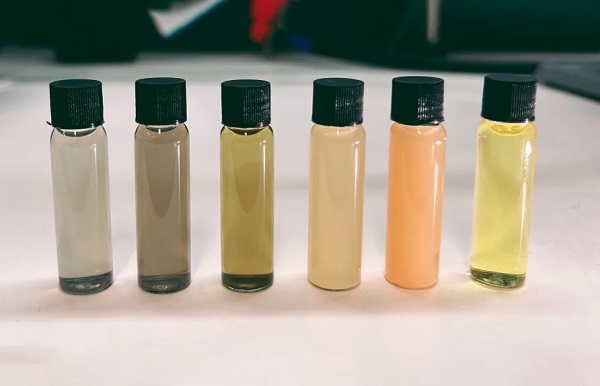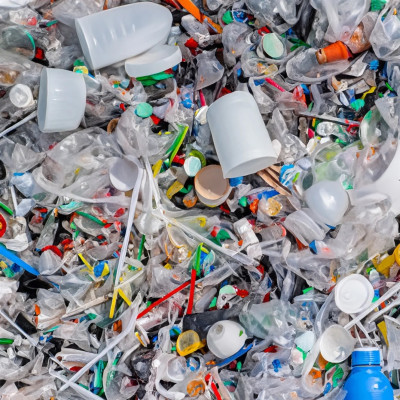Humans use a lot of energy to create and maintain comfortable environments – heating and cooling our buildings, homes, cars and even our bodies.
According to the United Nations, energy and how we use it is at the heart of the climate challenge. Globally, humanity’s energy use represents by far the largest source of greenhouse gas emissions. Around two thirds of global greenhouse gas emissions are linked to burning fossil fuels for energy that we then use for things like heating and electricity.
We shouldn’t just focus on energy generation from renewable resources. We also need to look at preserving and reducing our energy consumption as part of any energy solution, as the impacts of climate change become a reality.
Our new research, into new inks that use nanoparticles, published in the Royal Society of Chemistry’s Journal of Materials Chemistry A, has the potential to play an important role in reducing our reliance on energy production.
These inks can adjust the amount of radiation that can pass through them, based on the surrounding environment, and could be used to develop coatings for buildings that enable passive heating and cooling – reducing our need to rely on energy creation to regulate environments.
Passive climate control can reduce the severity of extreme conditions and help create comfortable living conditions without expending energy unnecessarily.
By engineering our inks to respond to their surroundings, we not only reduce energy expenditure, but negate the need for auxiliary control systems to adjust temperatures – these controls, like air conditioning or gas heating, are additional energy waste.
Earlier research has explored one of the main components of ‘phase change materials’ – vanadium oxide (VO₂). These materials use triggers, like heat, electricity or some other type of strain, which would create enough energy for the material to transform itself under stress.
But until now, we’ve been limited in how we can use phase change materials because they needed to be heated to very high temperatures to activate their ‘phase changing’ properties.
In practice, this meant we couldn’t use it on many surfaces, we couldn’t achieve the temperature levels necessary to activate the change in most environments, and the methods used weren’t scalable.

The new inks use nanoparticles to adjust the amount of radiation that can pass through them.
Phase change materials in the real world
Vanadium oxides are highly promising materials for heat retardant coatings because they can undergo insulator-to-metal transition (IMT) – basically acting as a switch, blocking heat beyond a particular temperature.
But this transition typically occurs at 68°C – it’s worth noting that, according to the Guinness Book of Records, the hottest temperature recorded on Earth is 56.7°C in Death Valley.
So, it’s safe to say that this high temperature transition makes it unsuitable for passive climate control in most household and industrial settings.
In our research, we used our understanding of how these materials are put together to test how we could trigger the IMT reaction at more practical temperatures of around 30-40°C.
Our team identified two ways to do this.
In the first, we changed the properties of the material itself to create a much more strained compound. This increased strain creates more energy, so the transformation process is triggered at lower temperatures.
The second way was to surround the molecule in glass nano-spheres, which introduces an external stressor – again, ramping up the strain increases the energy to the molecule, which activates its transformative properties.
Heat management at home and more
Our printable material is a proof-of-concept that’s versatile and adaptable – it can be laminated, sprayed or added to paints and building materials. These semiconductors can also be incorporated into clothing, regulating body temperature in extreme environments, or in the creation of large-scale, flexible electronic devices.
The next step involves taking our research, which has been patented by the University of Melbourne, to production – which will be affordable and simple.
It removes the previous restrictions on applying these inks on a large scale cheaply – this means we can easily retrofit existing structures and building materials. With manufacturing interest, it’s likely to take five to 10 years to reach market.
The potential of this material is huge as it can be used for so many different purposes, like preventing heat build-up in laptop electronics or protecting car windshields.
But the beauty of this material is that we can adjust its heat absorption properties to suit our needs. For instance, we can raise the IMT to keep greenhouses warm, or set it to room temperature to keep our houses comfortable.
Already, a different type of phase change material is used to manufacture smart glass, but our new material means we can engineer smarter bricks and paint.
This new nanotechnology is exciting – it can help make existing buildings more efficient, better for the environment and sustainable for the future.
Through collaboration with industry, we can scale up and integrate this material into existing and new technologies as part of a holistic approach to tackling the world’s climate change energy challenges.
Read the original article on University of Melbourne.







